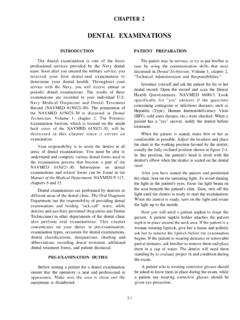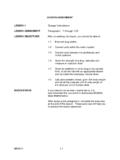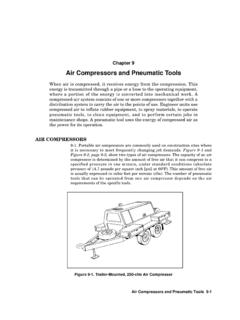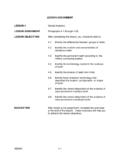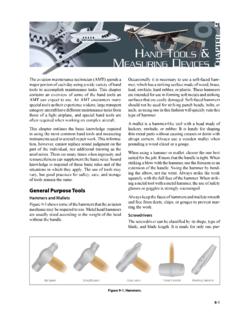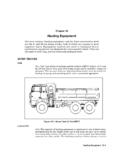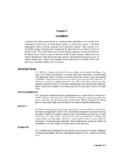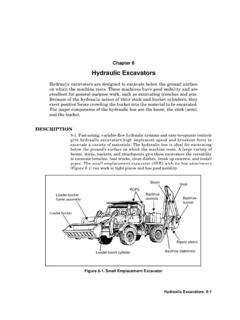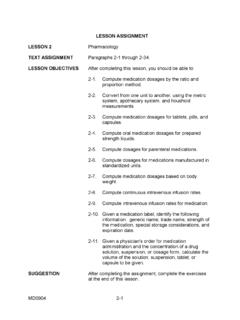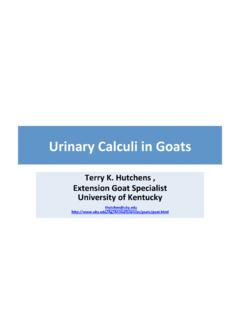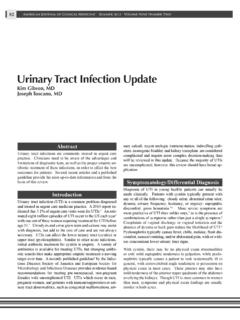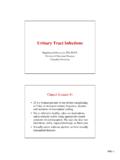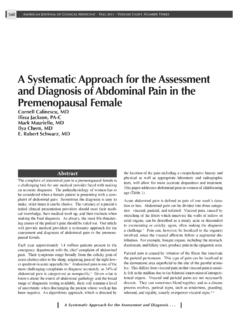Transcription of TEXT ASSIGNMENT LESSON OBJECTIVES - sweethaven02.com
1 MD09055-1 LESSON ASSIGNMENTLESSON 5 Active and Passive Range of Motion ASSIGNMENTP aragraphs 5-1 through OBJECTIVESA fter completing this LESSON , you should be able the effects of the purposes of exercise for theimmobile the five types of the nine types of body guidelines for range-of-motion studying the ASSIGNMENT , complete the exercisesat the end of this LESSON . These exercises will help youto achieve the LESSON 5 ACTIVE AND PASSIVE RANGE OF MOTION body was designed for motion. Regular exercise contributes to a healthybody; therefore immobility has a negative effect.
2 A joint that has not been movedsufficiently can begin to stiffen within 24 hours and will eventually become longer periods of joint immobility, the tendons and muscles can be affected as people move and exercise their joints through the normal activities of daily any joint cannot be moved in this way, the patient or nurse must move it atregular intervals to maintain muscle tone and joint mobility. Range of motion (ROM)exercises are ones in which a nurse or patient move each joint through as full a rangeas is possible without causing pain. The effect of both regular exercise and immobilityon major body systems are discussed in this EFFECTS OF System.
3 (1) Venous stasis caused by prolonged inactivity that restricts or slowsvenous circulation. Muscular activity, especially in the legs, helps move blood towardthe central circulatory system.(2) Increased cardiac workload due to increased viscosity from dehydrationand decreased venous return. The heart works more when the body is resting,probably because there is less resistance offered by the blood vessels and becausethere is a change in the distribution of blood in the immobile person. The result is thatthe heart rate, cardiac output, and stroke volume increase.(3) Thrombus and embolus formation caused by slow flowing blood, whichmay begin clotting within hours, and an increased rate in the coagulation of periods of immobility, calcium leaves bones and enters the blood, where it hasan influence on blood coagulation.
4 (4) Orthostatic hypotension probably due to a decrease in the neurovascularreflexes, which normally causes vasoconstriction, and to a loss of muscle tone. Theresult is that blood pools and does not squeeze from veins in the lower part of the bodyto the central circulatory system. The immobile person is more susceptible todeveloping orthostatic hypotension. The person tends to feel weak and faint when thecondition System.(1) Hypostatic pneumonia. The depth and rate of respirations and themovement of secretions in the respiratory tract is decreased when a person is pooling secretions and congestion predispose to respiratory tract infections.
5 Signsand symptoms include:(a) Increased temperature.(b) Thick copious secretions.(c) Cough.(d) Increased pulse.(e) Confusion, irritability, or disorientation.(f)Sharp chest pain.(g) Dyspnea.(2) Atelectasis. When areas of lung tissue are not used over a period oftime, incomplete expansion or collapse of lung tissue may occur.(3) Impaired coughing. Impairment of coughing mechanism may be due tothe patient's position in bed decreasing chest cage System.(1) Muscle atrophy. Disuse leads to decreased muscle size, tone, andstrength.(2) Contracture. Decreased joint movement leads to permanent shorteningof muscle tissue, resistant to stretching.
6 The strong flexor muscles pull tight, causing acontraction of the extremity or a permanent position of flexion.(3) Ankylosis. Consolidation and immobility of a joint in a particular positiondue to contracture.(4) Osteoporosis. Lack of stress on the bone causes an increase in calciumabsorption, weakening the System.(1) Altered sensation caused by prolonged pressure and continualstimulation of nerves. Usually pain is felt at first and then sensation is altered, and thepatient no longer senses the pain.(2) Peripheral nerve System.(1) Disturbance in appetite caused by the slowing of gastrointestinal tract,secondary immobility, and decreased activity resulting in anorexia.
7 (2) Altered digestion and utilization of nutrients resulting in constipation.(3) Altered protein System. Risk of skin breakdown, which leads to necrosisand ulceration of tissues, especially on bony System.(1) Renal calculi (kidney stones) caused by stagnation of urine in the renalpelvis and the high levels of urinary calcium.(2) Urinary tract infections caused by urinary stasis that favors the growth ofbacteria.(3) Decreased bladder muscle tone resulting in urinary (1) Increased risk of electrolyte imbalance. An absence of weight on theskeleton and immobility causes protein to be broken down faster than it is made,resulting in a negative nitrogen balance.
8 (2) Decreased metabolic rate.(3) Altered exchange of nutrients and Functioning.(1) Decrease in self-concept and increase in sense of powerlessness due toinability to move purposefully and dependence on someone for assistance with simpleself-care (2) Body image distortions (depends on diagnosis).(3) Decrease in sensory stimulation due to lack of activity, and alteredsleep-wake pattern.(4) Increased risk of depression, which may cause the patient to becomeapathetic, possibly because of decreased sensory stimulation; or the patient may exhibitaltered thought processes.
9 (5) Decreased social PURPOSES OF EXERCISE FOR THE IMMOBILE PATIENTa. To maintain joint mobility is done by putting each of the patient's jointsthrough all possible movements to increase and/or maintain movement in each To prevent contracture, atony (insufficient muscular tone), and atrophy To stimulate circulation, preventing thrombus and embolus To improve To increase tolerance for more To maintain and build muscle OF These exercises are carried out by the nurse, without assistancefrom the patient. Passive exercises will not preserve muscle mass or bonemineralization because there is no voluntary contraction, lengthening of muscle, ortension on Assistive.
10 These exercises are performed by the patient withassistance from the nurse. Active assistive exercises encourage normal musclefunction while the nurse supports the distal Active exercises are performed by the patient, without assistance, toincrease muscle These are active exercises performed by the patient by pulling orpushing against an opposing These exercises are performed by the patient by contracting andrelaxing muscles while keeping the part in a fixed position. Isometric exercises aredone to maintain muscle strength when a joint is immobilized. Full patient cooperationis OF BODY MOVEMENTNOTE: For types of body movement, see figure The state of being bent.
